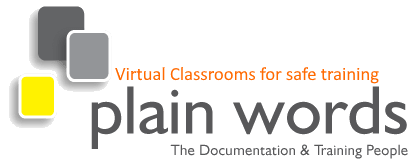Enquire about a private course
Perfect your Editing & Proofreading
In most organisations, editing or proofreading is carried out by people who have other responsibilities and not by professional editors. Sometimes they are chosen because they have an instinctive understanding of English grammar, but often they just happen to have some time available and an understanding of the topic.
However, editing isn’t just about checking grammar and punctuation, it’s also about making sure that your document is clear and concise and creates the maximum impact. The document may be going out to some of your most important customers or contacts, so it is important that it creates the right impression. A proofreading and editing course will ensure that companies do not waste the expense of creating their documents.
If you want to learn proofreading and editing skills that will add value to your documents, then this course is for you.
What you will learn on this editing & proofreading course
By the end of the course you will be able to:
- Appreciate the importance of a style guide and know what should go into it
- Effectively guide and support your writers
- Understand the value of editing and proofreading a document before it goes out
- Identify and correct many of the most common errors in grammar and punctuation
- Choose the option best suited to your reader when there’s more than one way to be right
- Edit text to create the maximum impact
- Apply formatting and layout to showcase your content to best effect
- Ensure your documents are clear and effective
What our customers say
“Many thanks – course was very useful and Giulia impressed me too. I have to say the level of quality your trainers have is something I haven’t seen before. Will be recommending Plain Words.”
LD, Halcrow
“Very clear course, the instructor was very well informed about the subject. The course was very concise, and flexible to meet our needs.”
DS, Danisco Animal Nutrition
“This course provided clarity on some common grammatical errors, gave a structure for editing effectively and principles of good writing. I feel more confident to edit documents and give feedback to my writers.”
JH, Quadriga Health & Safety
How we deliver the Perfect Your Editing & Proofreading course
It is available as a half or one-day tutor-led Virtual Classroom.
Choose from:
- A one-day course. All the course contents are covered, and delegates can practise on some of their own documents to apply the principles we cover. Exercises are also used to illustrate various points throughout the day.
- A half-day intensive course. We will discuss with you when you book the training which of the modules you want to concentrate on during the session. Delegates will receive the full course material and can read additional content in their own time.
Course Contents
1. Editing and proofreading: what they’re about
- The difference between editing and proofreading
- What makes a good proofreader? What makes a good editor?
- Incorporating editing and proofreading as part of your document production process
- Working tactfully with your writers
- Ensuring both you and the writer have the same reader and objective in mind
- Useful resources – the internet, dictionaries, books about grammar, style guides
2. Proofreading methods
Pre-Course Questionnaire
When you book we send you a questionnaire which we ask you to return to us before you attend the course. This enables our Trainers to assess your needs in advance.
- Professional techniques for proofreading
- Proofreading effectively – an effective process
- Standard mark-up symbols – which ones are in common use
- MS Word™ tools – what are they and what are their advantages and shortcomings
3. Ensuring a consistent voice
- What is your organisation’s voice? Why does it matter?
- The things that contribute to voice – usage, tone and style
- If there’s no obvious wrong or right – why consistency is more important than personal preference
- Things to standardise – dates, numbers, spelling, capitalisation, bold, italics, etc
- Creating a style sheet
4. Effective editing
- Applying eight principles of good writing to get big improvements with small changes
- Ironing out differences in writers’ styles
- Tricky decisions – wrong grammar but the right voice – should you change it or leave it?
Want Something a Little Different?
Give us a call today and we will tailor a course to suit you!
5. Spelling
- Common spelling errors and regularly misspelt words
- Words with more than one valid spelling
- When you can’t rely on the spell checker
6. Punctuation
- Avoiding the most common errors
- Punctuation changes quickly – what is current usage?
7. Common grammatical errors
- How to use the grammar checker in Word™
- What are some of the most common mistakes?
- Recognising ambiguous or unclear wording even if the grammar is correct
8. Formatting and layout
- Why is layout so important?
- Good and bad layout
- Making sure readers get the key messages quickly, even if they only skim-read, by improving layout
- What to look for when checking tables and figures
- Creating a formatting or layout checklist

